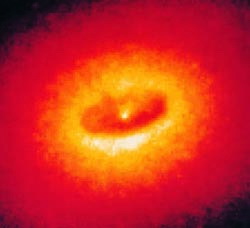Simulating black hole phenomena
The centres of most galaxies are believed to contain supermassive black holes that consume millions of stars which get trapped in their gravitational field. These events give off gravitational waves in the form of a compact binary system, called the extreme mass-ratio inspiral (EMRI). LISA, the Laser Interferometer Space Antenna, a joint proposed mission between the European Space Agency (ESA) and the United States’ National Aeronautics and Space Administration (NASA), aims to detect and measure such low-frequency (mHz) gravitational waves from EMRIs. Observations of EMRIs will have an important impact in astrophysics, cosmology and even fundamental physics. The goal of the EU-funded Lisasimico project was to develop techniques to model the dynamics of EMRIs and interpret their signals, determining the physical parameters of the system. The plan was to utilise these measurements in order to extract information on the EMRI science. Scientists successfully developed a new technique to model the evolution of EMRIs and gain theoretical knowledge of the gravitational waveforms with a certain degree of precision. Additionally, they made progress towards understanding the dynamics of EMRIs, while exploring possible astrophysical scenarios that can lead to inspirals inside the LISA-detected range. The Lisasimico method of simulating gravitational waves is expected to provide invaluable information regarding different inspiral mechanisms. Its most outstanding accomplishment will be the preparation of scientists on a theoretical basis for the LISA discoveries that will open a new window to the exploration of the Universe.



